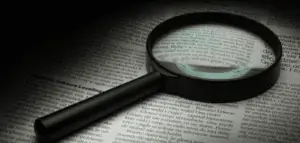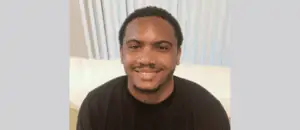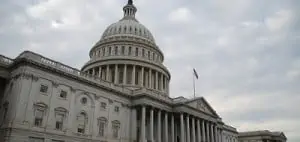Introduction
ASAN believes that the criminal legal system is set up and works in a way that hurts people with disabilities and people of color, especially disabled people of color. The criminal legal system is the government system whose job it is to decide if someone broke the law, whether they should be punished, and what those punishments should be. The criminal legal system causes a lot of problems for people with disabilities and people of color. The criminal legal system especially causes a lot of problems for people of color with disabilities. The problems the criminal legal system creates for people of color with disabilities start before prison, before courts or lawyers, and even before police. ASAN believes that we need to address the systemic issues with our criminal legal system whenever possible.
We work to ensure that students, especially students of color and students with disabilities, are free from seclusion, restraint, and arrest; and to uproot the systems that create the school-to-prison pipeline. With our partners, we work to end police violence and hold police accountable for their actions. We look for alternatives to police and prisons, such as supportive services in the community, restorative justice, and investment in necessities like affordable, accessible housing. ASAN also does legal and grassroots advocacy involving autistic people who have been unfairly treated by the criminal legal system, such as Kayleb Moon-Robinson, Neli Latson, and Matthew Rushin.
Policy Work
ASAN is a part of several coalitions, including The Alliance to Prevent Restraint, Aversive Interventions, and Seclusion, the Leadership Conference on Civil and Human Rights, the Defund Hate coalition, the Federal School Discipline Coalition, and the Coalition for Smart Safety. With our partners, we continue to work on keeping police out of schools, stopping seclusion and restraint, and demanding police be held accountable for their actions. In 2021, ASAN, along with COPAA, Communication First and families, secured a tremendous victory in the fight against seclusion and restraint. Represented by Brown, Goldstein, & Levy, our lawsuit challenged Fairfax County Public Schools’ use of restraint and seclusion. We reached a settlement, which bans seclusion entirely and bans most forms of restraint in Fairfax County, and paves the way for more challenges against seclusion and restraint throughout the United States. Our job is to fight for a more just world for people with disabilities — and because of that, we have a duty to stand against police violence and the systemic racism that fuels it.
ASAN continues to work to end police violence and systemic racism. Our job is to fight for a more just world for people with disabilities — and because of that, we have a duty to stand against police violence and the systemic racism that fuels it. ASAN is proud to be one of over 200 members of the Leadership Conference on Civil & Human Rights; we have signed letters like the one sent to Congressional leadership urging action on police violence and systemic racism. We also signed one letter calling for a Department of Justice investigation into the killing of Breonna Taylor’s murder, a letter calling on the Department of Justice to be transparent in its investigation into George Floyd’s murder, and another letter calling for the United Nations to launch a Human Rights Committee investigation into police violence in the United States. In 2020, we also helped the Consortium for Citizens with Disabilities (CCD) draft and release this statement addressing racism as a disability issue. ASAN is a board member of CCD, a coalition of almost 100 national disability organizations. In this statement, the coalition mourns the murders of Black people by police, names the relationship between racism and ableism, and identifies initial steps the coalition will take to address this intersection. ASAN also endorsed the PEACE Act, which seeks to end the use of deadly force by police. In 2021, we also discussed the conviction of Derek Chauvin for the murder of George Floyd, the still-evident racist roots of policing in the US, and the need to defund police departments and invest in approaches to community safety that provide alternatives to the police and the criminal legal system.
We are committed to continuing the fight for a world that is safe and just — for all of us. You can read more about the work we have done below. We will continue to update this page as our work unfolds.
Our Resources
- Fighting for Fairness: it starts with you!
- This resource was published in November 2021. Everyone should be able to access and learn from conversations about systemic discrimination. But information about these concepts isn’t always presented in an accessible way. Fighting for Fairness: it starts with you! is a first step to making these conversations accessible to all.
- Crisis in our Communities: Racial Disparities in Community Living
- This resource was published in February 2022. It’s important for people with disabilities to live in our communities. But it’s harder for disabled people of color to access community living.“Crisis in our Communities: Racial Disparities in Community Living” explains how policy choices, now and in the past, keep disabled people of color from accessing community living.
- Part 4: The Criminal Legal System
- This resource was published in February 2022. It is a chapter from “Crisis in our Communities: Racial Disparities in Community Living.” This chapter talks about the criminal legal system and how it especially hurts disabled people of color.
- What is Police Violence? A plain language booklet about anti-Black racism, police violence, and what you can do to stop it
- This resource was published in June 2020. Standing against anti-Black police violence is a critical part of fighting for disability rights. This booklet provides accessible information on topics including anti-Black racism and the police, police violence in the US, police violence and disability, and what we can do about police violence.
- School-to-Prison Pipeline Explainer
- This resource was published in June 2022. Many students with disabilities face restraint and seclusion. Disabled students of color often face punishment in school. They are more likely to have law enforcement called on them. These experiences can be very traumatic, and feed into the school-to-prison pipeline. This toolkit will explain what the school-to-prison pipeline is.
- The Inadequacy of Training: Police Interactions with I/DD and Mental Health Disabilities
- This presentation was done in September 2022 by Greg Robinson, ASAN Deputy Director of Public Policy, and AJ Link, ASAN Policy Analyst, during the Arc’s BIPOC Disabled: Disrupting Danger in Crisis Response, a day-long virtual teach-in and workshop to learn about disrupting violence in crisis response through legislation, legal tactics, and groundwork advocacy.
Resources from Other Organizations
- Policy Power Lunch: Crisis in Our Communities: A Toolkit Addressing Racism in Autistic and Disabled Community Living
- School-to-Prison Pipeline
- Systemic Racism Explained
- Remembering Stephon Watts Is Essential To Neurodiversity
- Mapping Police Violence
- 8 Can’t Wait
- We Can’t Breathe: The Deaf & Disabled Margin of Police Brutality Project and video
- Talking About Race: National Museum of African American History and Culture
- Vision For Justice
- “Defunding the Police” and People with Mental Illness
- A New Day or More of the Same? Our Hopes & Fears for 988 (and 911)
- Replacing School Police with Services that Work
- NDRN Federal Policy Update on Restraint and Seclusion
- Out from the Shadows: Informal Removal of Children with Disabilities from Public Schools
- Probation Referral: A Model for Diversion of Children and Youth with Disabilities from the Juvenile Justice System
- Ten for Justice
- 8 to Abolition
Latest Posts

ASAN Statement on the Bipartisan Safer Communities Act
On June 25, 2022, President Biden signed legislation intended to address gun violence. ASAN recognizes gun violence as a cause of needless and horrific suffering and death in our communities. We support congressional action to ensure that Americans, especially people with disabilities and multi-marginalized people, can go about our daily lives free from violence. However,…

Advocates Applaud Full Pardon of Neli Latson, a Young Black Man with Disabilities, After Decade of Injustice
After more than a decade of unjust prosecution and abuse in the criminal justice system, Neli Latson, a Black man with multiple disabilities, is finally a free man. Virginia Governor Ralph Northam granted Mr. Latson, 29, a full pardon late Monday. Mr. Latson, who has autism and intellectual disability, now has the chance to live a satisfying…

ASAN Urges Congress to Pass the Keeping All Students Safe Act
ASAN commends Congress for its reintroduction of the Keeping All Students Safe Act (KASSA). KASSA would ban almost all kinds of restraint and all kinds of seclusion across all 50 states, and would require school districts to collect data to prevent further use of these harmful practices. We urge Congress to move swiftly to pass…
